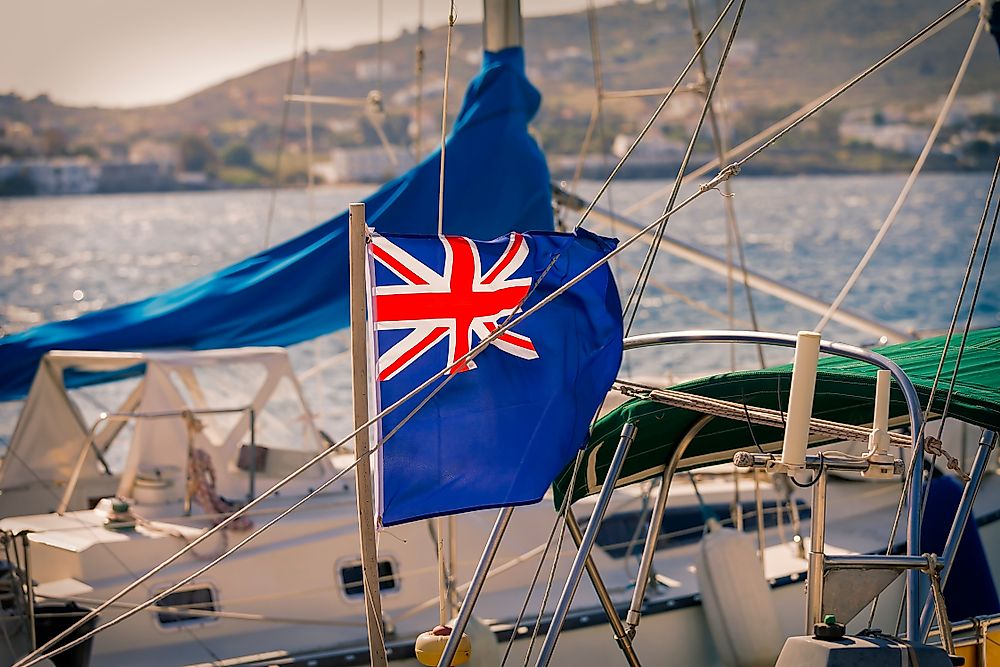Which National Flags Are Based On The Blue Ensign?

The history and the people of a country usually influence the design that is chosen for a nation's flag. A country may also decide to base the design of their flag to a design of their colonial master's flag. An ensign is the flown on the rear of a ship to indicate citizenry. The Blue Ensign is one of several ensigns used by the United Kingdom. The Blue Ensign is a design based on the Union Jack. The design is an essential part of the British government as it forms the ensign of various departments of the government. When used as an ensign of departments of government it is usually combined with an emblem or a badge. The history of the ensign can be traced back to the 17th century, and it evolved from St George's Cross. Various nations base their flag on the Blue Ensign.
Flags Using the Blue Ensign
Australia
Australia was previously under the dominion of Britain and chose to use the Blue Ensign as the design of its flag. The flag of Australia also includes six stars; a single Commonwealth star on the left half and five stars on the right half. A competition was held to determine the flag of Australia, and five artists who had nearly identical designs were selected as the winners. During Australia's history, various flags have been used in the territory including the Union Flag. Lieutenant James Cook was the first person to use the Union Flag in Australia in 1770. When European settlers first established a settlement on Australian land, they also flew the Union Flag.
Various territories within Australia also use the Blue Ensign as the primary design for their flag. Tasmania's flag includes the Blue Ensign as well as the state's badge, a red lion. The flag of New South Wales, as well as the governor's standard, are based on the Blue Ensign. Other Australian territories that use the Blue Ensign as their flag's primary design include Queensland, Western Australia, South Australia, and Victoria.
Fiji
Fiji's flag is a variation of the Blue Ensign having a lighter blue background as well as a shield containing various symbols within it. Fiji uses a lighter blue to signify the importance of the Pacific Ocean to the nation's economy. The Pacific Ocean provides rich fishing grounds for the citizens as well as attracting vast numbers of tourists annually. The symbols within the shield symbolize the variety of agricultural activities that take place on the island. The lower left part of the shield contains a dove to symbolize peace. Various leaders within Fiji's government have proposed to change the flag's design although their efforts have proven futile.
New Zealand
The flag of New Zealand and the flag of the Cook Islands, a nation associated with New Zealand, both use the Blue Ensign as the basis of their flags. The decision to use the Blue Ensign was because both countries were once British colonies. New Zealand's flag also has four stars that depict the Southern Cross, one of the most iconic constellations. The flag of the Cook Islands includes a ring of stars as a symbol of unity among the islands.
Tuvalu
After Tuvalu gained their independence in 1978, they adopted a flag based on the Blue Ensign. The flag of Tuvalu uses a lighter shade of blue as well as nine stars. The stars are a symbol for the nine Tuvaluan islands.
Significance of a National Flag
Apart from being a symbol of a nation, flags evoke deep patriotic feelings among the citizens of any country. Flags are especially essential to the military as they provide them with a symbol to fight for and rally behind.











